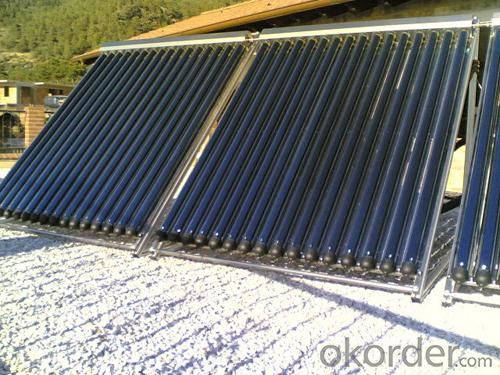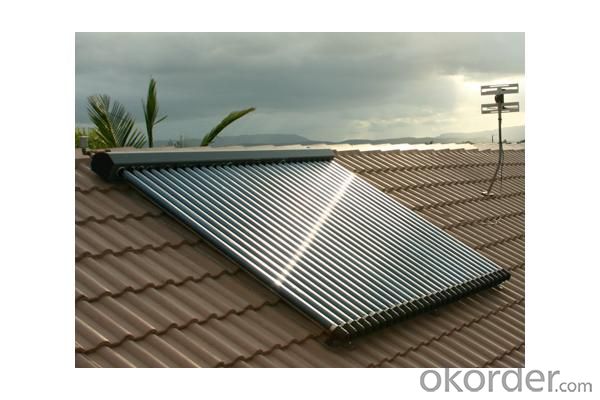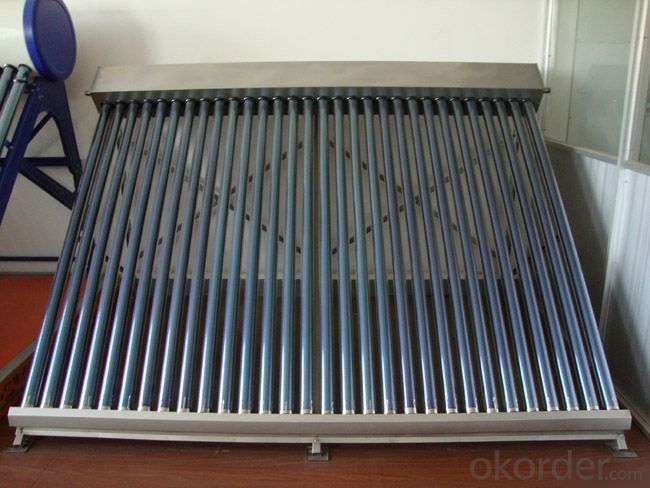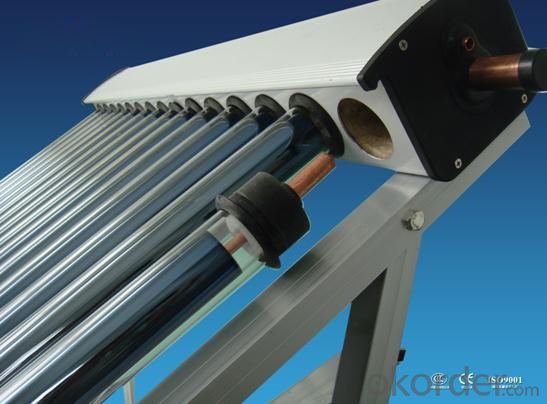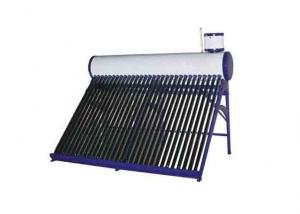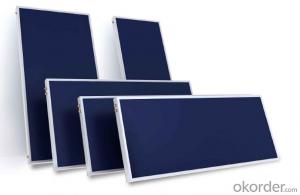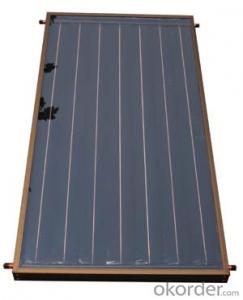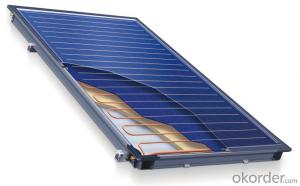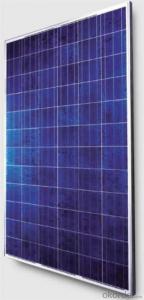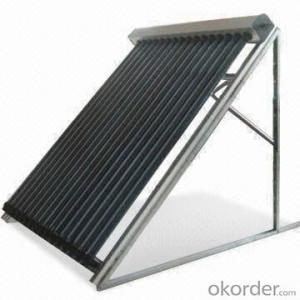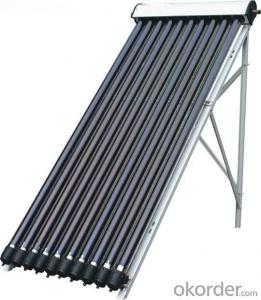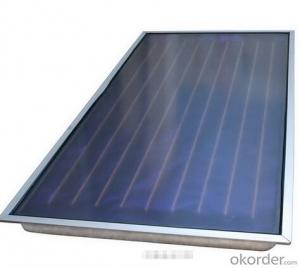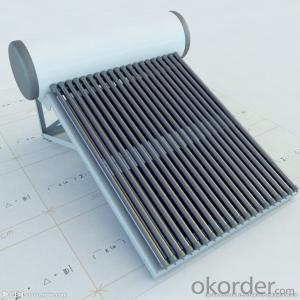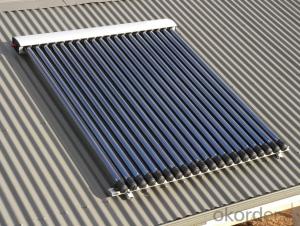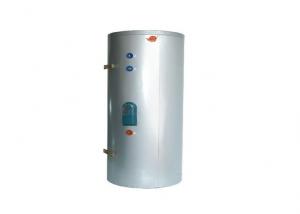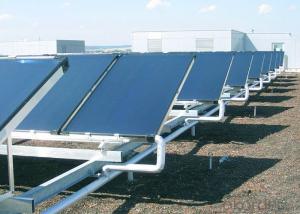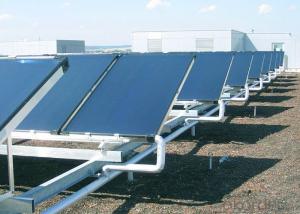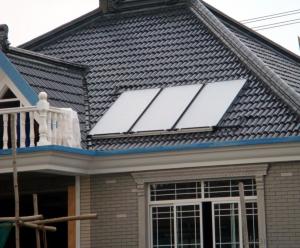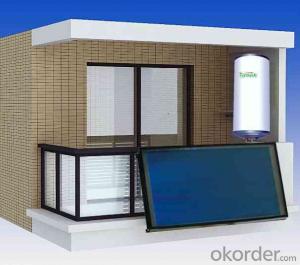Best Evacuated Tube Solar Collectors - High Efficiency Heat Pipe Vacuum Tubes
- Loading Port:
- China main port
- Payment Terms:
- TT OR LC
- Min Order Qty:
- 5 set
- Supply Capability:
- 10000 set/month
OKorder Service Pledge
OKorder Financial Service
You Might Also Like
Specification
manifold (inner) | red copper |
manifold (exterior) | aluminum alloy |
glass tube dimensions | 58mm * 1800mm |
daily efficiency | ≥55% |
heat preservation | 72 hours |
hail resistance | 25mm |
max pressure | 7 bar |
coating of vacuum tube | ALN/AIN-SS/CU |
heat pipe | anti-freezing > -35 degree |
certificate | Solar Keymark, EN12975,SRCC |
Serious Product
Models | L*W*H mm | Vacuum tube | Power output | Efficiency | Header mm | Frame | container loading 20FT/40HQ sets | Gross Weight kg |
SHC-8 | 1917*910*133 | 58*1800*8pcs | 939W | 0.668 | Φ35/1.0 | AL alloy | 185/445 | 27 |
SHC-10 | 1917*1130*133 | 58*1800*10pcs | 1189W | 159/385 | 33 | |||
SHC-12 | 1917*1350*133 | 58*1800*12pcs | 1440W | 149/358 | 40 | |||
SHC-15 | 1917*1680*133 | 58*1800*15pcs | 1815W | 120/290 | 49 | |||
SHC-18 | 1917*2010*133 | 58*1800*18pcs | 2191W | 100/242 | 59 | |||
SHC-20 | 1917*2230*133 | 58*1800*20pcs | 2442W | 87/210 | 66 | |||
SHC-22 | 1917*2450*133 | 58*1800*22pcs | 2692W | 83/202 | 72 | |||
SHC-24 | 1917*2670*133 | 58*1800*24pcs | 2943W | 77/188 | 79 |
Packaging & Delivery
Packaging Details: | Exporting Carton with big foaming protection |
Delivery Detail: | In 10-15 days |
Loading Quantity
Model | Tube | Tube Q.T.Y | Loading Q.T.Y/40HQ |
GSC15 | 58*1800mm | 15pcs | 315sets |
GSC18 | 58*1800mm | 18pcs | 265sets |
GSC20 | 58*1800mm | 20pcs | 248sets |
GSC22 | 58*1800mm | 22pcs | 225sets |
GSC25 | 58*1800mm | 25pcs | 200sets |
GSC30 | 58*1800mm | 30pcs | 168sets |
Details of solar collector:
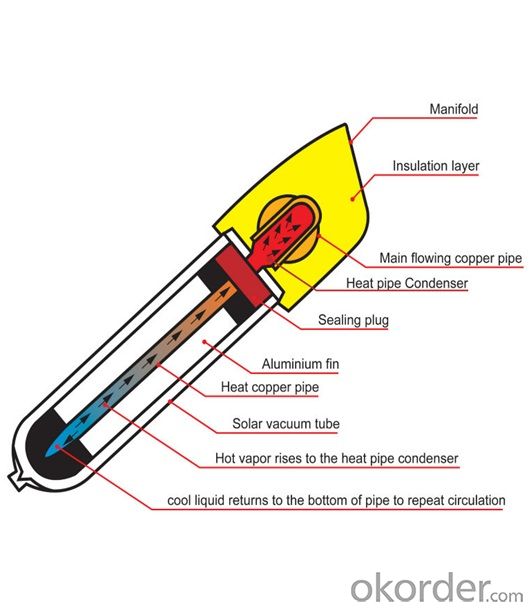

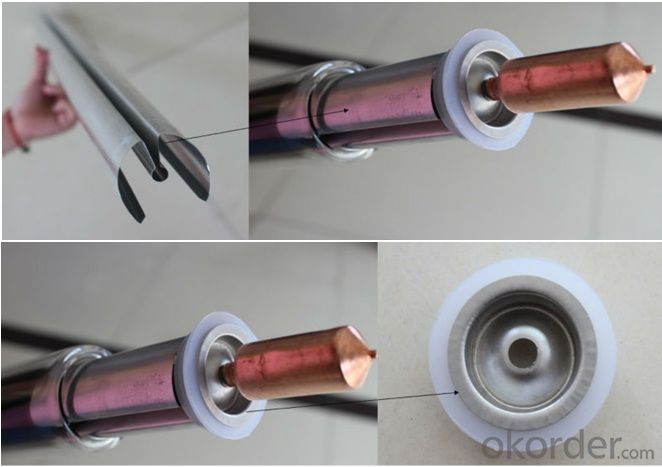
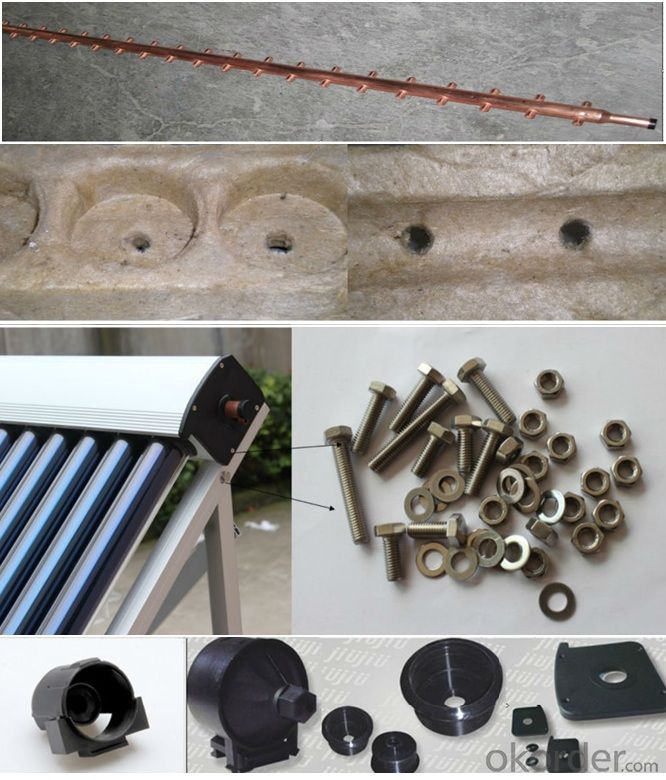
- Q: How do solar collectors impact energy bills?
- Solar collectors can have a significant impact on energy bills by reducing or even eliminating the need for traditional energy sources. Solar collectors, also known as solar panels, convert sunlight into electricity, which can be used to power various appliances and systems in a home or business. By harnessing the power of the sun, solar collectors provide a clean and renewable source of energy that can offset the need for electricity from the grid. When solar collectors generate more electricity than is being used, the excess power can be fed back into the grid through a process called net metering. This allows homeowners and businesses to receive credits on their energy bills for the excess electricity they generate. Over time, these credits can offset the cost of electricity consumed during times when the solar collectors are not producing enough power, such as at night or during cloudy days. By reducing the reliance on traditional energy sources, solar collectors can result in significant savings on energy bills. Depending on the size of the solar installation and the energy consumption patterns, some homeowners and businesses may even see a complete elimination of their energy bills. Additionally, solar collectors provide protection against rising energy costs as they provide a stable and predictable source of energy. Furthermore, solar collectors can contribute to a more sustainable future by reducing greenhouse gas emissions and dependence on fossil fuels. This not only benefits the environment but also helps to mitigate the effects of climate change. In conclusion, solar collectors have a positive impact on energy bills by reducing or eliminating the need for traditional energy sources, providing credits for excess electricity generated, and offering protection against rising energy costs. They also contribute to a more sustainable future by reducing greenhouse gas emissions and dependence on fossil fuels.
- Q: Can solar collectors be used in locations with frequent snowfall?
- Yes, solar collectors can be used in locations with frequent snowfall. However, it is important to consider certain factors such as the angle and orientation of the collectors, as well as implementing measures to prevent snow accumulation on the panels. This can be done through tilt or tilt-and-slide systems, heating elements, or regular snow removal. Despite the challenges, solar collectors can still be a viable and efficient source of renewable energy in snowy regions.
- Q: Can solar collectors be used at night?
- No, solar collectors cannot be used at night as they rely on sunlight to generate electricity or heat.
- Q: How do solar collectors impact cultural heritage?
- Cultural heritage can be affected both positively and negatively by the presence of solar collectors. On the positive side, solar collectors contribute to the use of renewable energy sources, reducing our reliance on fossil fuels and aiding in the fight against climate change. This is particularly important for the preservation of cultural heritage sites that are vulnerable to the consequences of global warming, such as rising sea levels or extreme weather events. Furthermore, solar collectors offer a sustainable energy solution for cultural heritage sites situated in remote areas without access to the electricity grid. This enables the preservation and exhibition of artifacts and structures that require electricity, such as lighting or temperature control systems, without the need for disruptive infrastructure development. However, the visual impact of solar collectors on cultural heritage sites must be carefully considered. These sites often possess unique architectural or natural beauty that can be compromised by the presence of large solar panels. Preservationists and architects must thoughtfully incorporate solar collectors into the design of heritage sites to ensure minimal disruption to their aesthetics and cultural significance. Additionally, the installation of solar collectors should be executed in a manner that respects the historical importance of the site and does not compromise its authenticity. This entails placing solar collectors in non-intrusive locations and ensuring that they do not harm or alter the original structures or landscapes. In conclusion, solar collectors have the potential to positively affect cultural heritage by promoting sustainability and offering energy solutions for remote sites. However, careful planning and integration are essential to guarantee that their installation does not compromise the visual, historical, and cultural value of these sites.
- Q: Can solar collectors be used for generating electricity on traffic signals?
- Yes, solar collectors can be used for generating electricity on traffic signals. Solar panels can be installed on top of traffic signal poles to convert sunlight into electricity, which can then power the signals. This helps reduce the reliance on traditional grid electricity and promotes the use of renewable energy sources.
- Q: How do solar collectors affect the insurance premiums of a property?
- Solar collectors can potentially affect insurance premiums of a property by increasing them due to the added value of the renewable energy system and its potential for damage or liability risks. However, some insurance providers also offer discounts or incentives for properties with solar collectors, as they can reduce the reliance on traditional energy sources and decrease the risk of certain types of damages. Ultimately, the impact on insurance premiums will depend on various factors, including the type and size of the solar installation, location, and the insurance company's policies.
- Q: Can solar collectors be used for generating electricity during cloudy days?
- Yes, solar collectors can still generate electricity during cloudy days, although the efficiency and power output may be reduced compared to clear sunny days.
- Q: Are solar collectors eligible for government incentives?
- Yes, solar collectors are eligible for government incentives.
- Q: Are there any architectural considerations when installing solar collectors?
- Yes, there are several architectural considerations when installing solar collectors. These include the orientation and tilt angle of the collectors to maximize sunlight exposure, the structural integrity of the building to support the added weight of the collectors, and the aesthetic impact of the installation on the overall design of the building. Additionally, the location and placement of the collectors need to be carefully planned to avoid shading from nearby structures or trees.
- Q: How does the orientation of a solar collector affect its performance?
- The orientation of a solar collector significantly affects its performance. The optimal orientation is to face the collector towards the south (in the northern hemisphere) or north (in the southern hemisphere) to maximize the exposure to sunlight throughout the day. This allows the collector to capture the maximum amount of solar energy. Deviating from the ideal orientation can result in a decrease in energy absorption, leading to reduced efficiency and overall performance of the solar collector.
Send your message to us
Best Evacuated Tube Solar Collectors - High Efficiency Heat Pipe Vacuum Tubes
- Loading Port:
- China main port
- Payment Terms:
- TT OR LC
- Min Order Qty:
- 5 set
- Supply Capability:
- 10000 set/month
OKorder Service Pledge
OKorder Financial Service
Similar products
Hot products
Hot Searches






